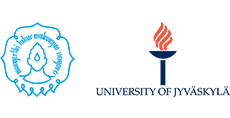Improving Deaf and Hard of Hearing Students’ Achievements Using STS Approach: A Literature Review
Abstract
Science for all indicates that science should be accessible to all learners including deaf and hard of hearing (DHH) students, but they tend to struggle with developing abstract concepts of science optimally. Science, Technology, and Society (STS) approach is an interdisciplinary approach to science learning which is integrating science with technology and society aspects. Through STS approach, students become more interested in learning abstract concepts of science because they can apply the concepts throughout their daily living. The purpose of this study was to investigate whether DHH students improve their achievement levels of science specifically in the aspects of cognitive and affective via STS approach. A total of five journal articles from 2008-2016 written in English on the topic of science learning using STS approach were reviewed. This literature was collected via ERIC database. Then they were analyzed and interpreted in accordance with the objectives of the study. Based on the literature reviews, students experiencing STS instruction improve their achievements according to five STS domains in science learning. Due to learning via STS approach, students not only memorize the science concepts, but also enable to analyze scientific information as well as to apply it in their real-life situations, and set them on a path of life-long learning in science.
Keywords: Achievements, Science Learning, Deaf and Hard-of-Hearing, STS Approach.
Full Text:
PDFReferences
Akcay, B., & Akcay H. (2015). Effectiveness of science-technology-society (STS) instruction on student understanding of the nature of science and attitudes toward science. International Journal of Education in Mathematics, Science and Technology, 3(1), 37-45.
Akram, B., Mehboob, R., Ajaz, A., & Bashir, R. (2013). Scientific concept of hearing and deaf students of grade VII. Journal Elementary Education, 23(1), 1-12.
Autieri, S. M., Amirshokoohi, A., & Kazempour, M. (2016). The science-technology-society framework for achieving scientific literacy: an overview of the existing literature. European Journal of Science and Mathematics Education, 4(1), 75‐89.
Erting, L. (2001). Language and literacy development in a preschool for deaf children: A qualitative study. Doctoral dissertation, University of Maryland.
Flores, A. C. F. & Rumjanek, V. M. (2015). Teaching science to elementary school deaf children in Brazil. Creative Education, 6, 2127-2135. doi: 10.4236/ce.2015.620216
Haenudin. (2013). Pendidikan Anak berkebutuhan khusus tuna rungu [Education for children with special need: Deaf]. Jakarta: Luxima Metro Media.
Kim, K. B., Hauser, P.C. & Schick, B. (2015). Deaf children’s science content learning in direct instruction versus interpreted instruction. Journal of Science Education for Students with Disabilities, 18, 10-24.
Lane-Outlaw, S. L. (2009). A qualitative investigation of ASL/English bilingual instruction of deaf students in secondary science classrooms. Doctoral dissertation, Gallaudet University, Washington DC.
Lee, M-K. & Erdogan, I. (2007). The effect of science-technology-society teaching on students’ attitudes toward science and certain aspects of creativity. International Journal of Science Education, 29(11), 1315-1327. doi: 10.1080/09500690600972974
Mangrubang, F. R. (2004). Preparing elementary education majors to teach science using an inquiry-based approach: the full option science system. American Annals of the deaf, 149(3), 290-303.
Mansour, N. (2009). Science-technology-society (STS): A new paradigm in science education. Bulletin of Science, Technology, and Society, 29(4), 287-297. doi: 10.1177/0270467609336307
McIntosh, R. A., Sulzen, L., Reeder, K., & Kidd, D. H. (1994). Making science accessible to deaf students: The need for science literacy and conceptual teaching. American Annals of the deaf, 139(5), 480-484.
Molander, B. O., Pedersen, S., & Norell, K. (2001). Deaf pupils’ reasoning about scientific phenomena: School science as a framework for understanding or as fragments of factual knowledge. Journal of deaf studies and deaf education, 6(3), 200-211.
Moores, D., Jathro, J., & Creech, B. (2001). Issues and trends in instruction and deafness. American Annals of the Deaf, 146(2), 72-76.
Mundilarto. (2002). Kapita selekta pendidikan fisika [Capita Selecta of physics education]. Yogyakarta, Indonesia: FMIPA UNY.
Muzari, I. (2015). Development of SETS-based integrated natural science module on the theme of healthy food and my body to improve the achievement. Thesis: UNS Indonesia. Seminar Nasional Konservasi dan Pemanfaatan Sumber Daya Alam UNS.
Naidoo, S. S. (2008). Science education for deaf learners: educator perspectives and perceptions. Unpublished thesis. University of the Witwatersrand.
National Science Teachers Association (NSTA) (2006). NSTA handbook. Arlington, VA; Author.
Patalano, F. (2015). Science based education for students who are deaf and/or hard of hearing. Graduate Thesis and Dissertation. Paper I. Retrieved from https://scholarworks.arcadia.edu/cgi/viewcontent.cgi?article=1000&context=grad_etd
Steele, A. (2013). Shifting currents: Science technology society and environment in Northern Ontario schools. Brock Education, 23(1), 18-42.
UNESCO. (2015). Monitoring of the Implementation of the Convention and Recommendation against Discrimination in Education 8th Consultation: The Right to Education for Persons with Disabilities. United Nations Educational, Scientific and Cultural Organization: France. Retrieved from http://unesdoc.unesco.org/images/0023/002325/232592e.pdf
Yager, R. E. (ed). (1992). The status of science-technology-society reform efforts around the world. International Council of Associations for Science Education (ICASE). Retrieved from www.icaseonline.net/robert_yager.pdf on July 30, 2017.
Yager, R. E., & Ackay, H. (2008). Comparison of student learning outcomes in middle school science classes with STS approach and a typical textbook dominated approach. RMLE Online: Research in Middle Level Education, 31(7), 1-16.
Yager, R. E., & McCormack, A. J. (1989). Assessing teaching/learning successes in multiple domains of science and science education. Science Education, 73(1), 45-58.
Yager, R. E., Chol, A., Yager, S. O., & Ackay, H. (2009). Comparing science learning among 4th-, 5th-, and 6th-grade students: STS versus textbook-based instruction. Journal of Elementary Science Education, 21(2), 15-24.
Yörük, N, Morgil, İ., & Seçken, N. (2010). The effect of science, technology, society, environment (STSE) interaction on teaching chemistry. Natural Science, 2(12), 1417-1424.
Yörük, N., Morgil, İ., & Seçken, N. (2009). The effects of science, technology, society and environment (STSE) education on students’ career planning. US-China Education Review, 6(8), 68-74.
DOI: https://doi.org/10.20961/ijpte.v2i0.19748
Refbacks
- There are currently no refbacks.
Copyright (c) 2018 Iva Nandya Atika, Ediyanto Ediyanto, Norimune Kawai

This work is licensed under a Creative Commons Attribution 4.0 International License.
 | International Journal of Pedagogy and Teacher Education Print ISSN: 2597-7792 |

.jpg)





.png)








.png)